Ivan Čuk
Editorial
Laurita Marconi Schiavon, Roberto Rodrigues Paes
THE FORMATION OF BRAZILIAN FEMALE GYMNASTS TAKING PART IN THE OLYMPIC GAMES (1980-2004)
José Ferreirinha, Joana Carvalho, Cristina Côrte-Real, António Silva
THE EVOLUTION OF REAL DIFFICULTY VALUE OF UNEVEN BARS ROUTINES FROM ELITE GYMNASTS IN LAST 5 OLYMPIC CYCLES
Saša Veličković, Dragoljub Petković, Emilija Petković
CASE STUDY ABOUT DIFFERENCES IN CHARACTERISTICS OF THE RUN-UP APPROACH ON THE VAULT BETWEEN TOP-CLASS AND MIDDLE-CLASS GYMNASTS
Marise Botti, Juarez Vieira do Nascimento
THE TEACHING-LEARNING-TRAINING PROCESS IN RHYTMIC GYMNASTICS SUPPORTED BY THE ECOLOGICAL THEORY
Vasilis Kaimakamis, George Dallas, Panagiotis Stefanidis, George Papadopoulos
THE SPREAD OF GYMNASTICS IN EUROPE AND AMERICA BY PEDAGOGUE-GYMNASTS DURING THE FIRST HALF OF THE 19TH CENTURY
Ivan Čuk
Editorial
Dear friends,
last October we attended the World Championship in Artistic Gymnastics in Rotterdam. We had a lot of meetings, but the most important was meeting with the president of the International Gymnastics Federation professor Bruno Grandi. We presented him our work during the last year. At the end of December we have reached agreement about collaboration between FIG and Science of Gymnastics Journal. We have got a new editorial board member –Keith Russell, Ph.D., who is the president of the FIG Scientific Commission and Hardy Fink, M.Sc., a member of editorial board as the director of the FIG Academy. Both FIG institutions – scientific and educational ones will be involved in further development of our journal.
The last issue of Journal was visited by more than 5500 visitors, what gives us a true compliment for our endeavor. However we would also like to have some feedback from you, the readers and researchers, as well. Researchers and authors show their interest in specific topics and their articles are blindly reviewed before publication. But we would like to hear positive or negative opinions about articles, perhaps some suggestions and additional ideas, anything in your opinion beneficial to further research. We will therefore open a forum for visitors to express their views and you are kindly invited to join the forum but also to send letters to the editor whenever feel appropriate. The letters will be published in the journal if judged so by the editor and editorial board.
February issue of the Journal starts with the article on Brazilian women gymnastics development in the last 30 years. Lauritia Marconi Schiavon and Roberto Rodrigues Paes performed a comparative analysis of their Olympic gymnasts sport life. All those federations who are starting with the first steps in gymnastics and want to win medals as soon as possible will highly value this excellent article. It is worth to note again that the coach’s expertise is a key point on the way to success. It is always better to learn on somebody’s other mistakes than to make your own.
The second article is by Portugese team of authors Joana Carvalho, Cristina Côrte-Realand António Silva lead by José Ferreirinha. They analyzed evolution of the real difficulty value of uneven bars routines from elite gymnasts in the last 5 Olympic cycles. From their article the coaches can obtain important information about where the routines on uneven bars are headed in the future.
The third article comes from Serbia. Saša Veličković, Dragoljub Petković and Emilija Petković report interesting research dealing with the problem why their gymnasts can not perform the most difficult vaults well. They found the causes to lie in the runway strategy and technique. Sometimes we do forget the runway is the most important part of the vault.
The fourth article is from rhythmic gymnastics and deals with teaching and learning process. Brazilian authors Marise Botti and Juarez Vieira do Nascimentofound that the teams investigated presented almost the same structure of trainings and differed only in their teaching methods.
The last article is about the history again. The Greeks Vasilis Kaimakamis, George Dallas , Panagiotis Stefanidou, George Papadopoulos write about the spread of gymnastics in Europe and America by pedagogue-gymnasts during the first half of the 19th century, an overview of era before our time and to whom we have to be grateful for the development of our beloved sport.
I wish you pleasant reading and a lot of inspiration. The whole SCGYM_3_1_2001_journal
Laurita Marconi Schiavon, Roberto Rodrigues Paes
THE FORMATION OF BRAZILIAN FEMALE GYMNASTS TAKING PART IN THE OLYMPIC GAMES (1980-2004)
The results of Brazilian women athletes in international level artistic gymnastics competitions have taken evolutionary strides in the last ten years. In search of scientific information to understand this evolution we focused long-term development of Brazilian women artistic gymnasts who participated in the Olympic Games from 1980 to 2004. In order to do so, the qualitative research method of oral history was used. Testimonials were gathered from the ten ranked Brazilian athletes from the Olympic Games in this period of time, to obtain an account of their sporting life. From the field research and testimonials 14 themes emerged and were analyzed: Sport initiation in artistic gymnastics, participation in other sports, the athlete’s idols, training facilities, designing training programs, nutritional aspects, psychological aspects, injuries, participation in the Olympic Games, the coach-athlete relationship, parental support, financial situation, important influences and retirement from artistic gymnastics. As a result of this analysis educational guidelines are proposed for long-term athlete development in women´s artistic gymnastics.
Keywords:women artistic gymnastics, Brazil, history, olympic games, long-term development. Whole article.pdf
José Ferreirinha, Joana Carvalho, Cristina Côrte-Real, António Silva
THE EVOLUTION OF REAL DIFFICULTY VALUE OF UNEVEN BARS ROUTINES FROM ELITE GYMNASTS IN LAST 5 OLYMPIC CYCLES
Purpose of the present study was to characterize and analyse the evolution of real difficulty value of full routines, parts and specific kind of elements of Uneven Bars. Besides the full routine difficulty were analyzed the mount, dismount, flight elements, first and second half routines, bars changes, elements executed on low and high bar, number of elements of value D and higher, “in bar elements” and special connections. In total, 104 routines from world championships and Olympic Games finals of uneven bars were analysed between 1989 and 2008. As main results was observed significant increases in all studied variables. Real difficulty value of complete routines ranged from 3.15 to 5.80 points between first and last Olympic cycles analyzed. Special evolution of difficulty values was observed in number of elements D, E and F (from 2.80 to 8.05), total number of bonus connections (from 0.40 to 4.19) and in “in bar” elements (0.25 to 1.57). Based on results we may conclude that uneven bars routines suffered a significant evolution in difficulty and, in some specific kind of elements, just with last changes in Code of Points was possible to confirm the announced increases in quantity and difficulty such as the flight elements.
Keywords:women artistic gymnastics, Uneven Bars, Difficulty. The whole article in *.pdf.
Saša Veličković, Dragoljub Petković, Emilija Petković
CASE STUDY ABOUT DIFFERENCES IN CHARACTERISTICS OF THE RUN-UP APPROACH ON THE VAULT BETWEEN TOP-CLASS AND MIDDLE-CLASS GYMNASTS
The aim of this research was to determine the differences in run-up velocity of the last ten steps between top class athletes and middle class athletes. The examined sample consisted of four athletes participating in the finals of the World Championship in December 2002, and two participants of the World Cup in Maribor 2006. Run-up velocity was registered by the kinematic analysis system APAS and the OPTO-TRACK-Microgate system. Statistical significance of the difference in arithmetic means of run-up parameters was determined by t-test and U-test. Results showed a progressive increase in velocity in both examined groups and the fact that all gymnasts reach higher velocity on their last step (Top – 9.95m/s; Middle – 8.57m/s). Top class gymnasts have a significantly lower level of velocity at the initial part of the analysed run-up (3.2m/s related to 5.4 m/s), while at the end of the run-up they reach higher velocity values and bigger progression from step to step in comparison with middle class gymnasts, which is also statistically significant. In the top class gymnast group a velocity peak was observed on the 6th step with a slight decrease in velocity on the 7th step and increasing again for the last three steps before the vault board. Unlike the middle class gymnast group where a constant increase in velocity from the beginning to the end of the analysed run-up was observed. These results suggest that middle class gymnasts should try to change their run-up approach to the vault in a manner that follow as closely as possible the run-up of top class gymnasts.
Keywords: men artistic gymnastics, vault, run-up, velocity, steps. The whole article in *.pdf.
Marise Botti, Juarez Vieira do Nascimento
THE TEACHING-LEARNING-TRAINING PROCESS IN RHYTMIC GYMNASTICS SUPPORTED BY THE ECOLOGICAL THEORY
This study aimed to analyze and compare the structure of the teaching-learning-training process in children’s Rhythmic Gymnastics. Seventeen girls, aged 10 to 12 years, who were members of the Rhythmic Gymnastics initiation classes for athletes in the cities of Florianópolis-SC (n = 11) and Maringá-PR (n = 6) participated in this study. A systematic observation method was used for data collection during the typical weeks of training. Chi-square and, when necessary, the Fisher Exact Test were used for statistical analysis. Using aspects of the Ecological Theory, the results showed a similarity between the structure of teaching-learning-training process, as the activity identification, the tasks progression, and coaches’ and athletes’ conduct. It is possible to conclude that the evidence seems to confirm the use of a methodological approach in teaching RG founded on notions of progressions of exercises through the refinement and application of the technique. On the other hand, it has also become evident that interpersonal relationships that go through the training programs need to be re-evaluated
Keywords: rhythmic gymnastics, teaching, learning, training, ecological theory. The whole article in *.pdf.
Vasilis Kaimakamis, George Dallas, Panagiotis Stefanidis, George Papadopoulos
THE SPREAD OF GYMNASTICS IN EUROPE AND AMERICA BY PEDAGOGUE-GYMNASTS DURING THE FIRST HALF OF THE 19TH CENTURY
At the beginning of the 19th century, a general gymnastics movement was created by the Philanthropists’ movement of the 18th century. Its main representatives were the great gymnastic systems (German, Swedish, English, and Slavic). In addition to the founders of the above gymnastic systems, there were also some other pioneer pedagogue – gymnasts. These people promoted physical education and more specifically gymnastics (Artistic Gymnastics:AG), and developed various gymnastic methods in several countries. The main components of these gymnastic methods were the various forms of AG, which spread and developed mainly through the gymnastic associations of the German gymnastic system. The aim of this study was to research and describe the gymnastic systems and the instructive and written works of the first pedagogue – gymnasts in the first half of the 19th century, who spread physical education and AG across Europe and America.
Keywords: history, gymnastic movement, gymnastic systems, gymnastic apparatuses. The whole article in *.pdf.





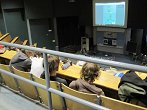


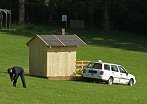
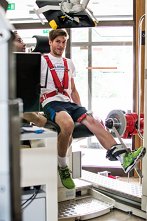







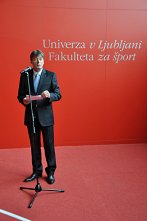
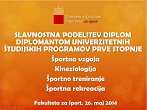


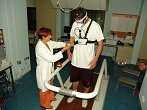








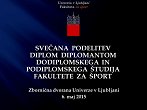
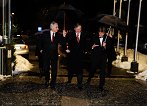


.png)